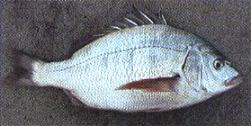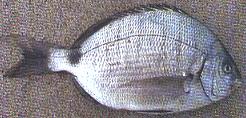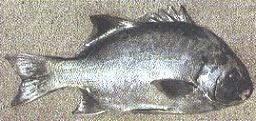General information. The
Namibian coast, known for its unique scenic beauty, is also regarded as one
of the best fishing grounds in the world. We offer fishing excursions in ski
boats with 4 - 8 persons per boat along the coast: half-day
or day trips with all necessary angling equipment, bait and
experienced guide, fishing trips with duration of several days, game
fishing excursions. We also organize beach fishing with 4x4 vehicles. All boats are
surveyed annually and have seaworthy certificates for all safety, radio, and
navigational equipment required. Skippers are in possession
of valid skipper’s tickets. Game fishing done in deep sea
for snoek, yellowtail, and tuna and organized from November till March.
ROCK AND SURF ANGLING
Rock and surf angling is still the most popular sport along the West Coast and thousands of angler's from all over Southern Africa visit Henties Bay every year from February to April. Although anglers are nowadays limited to fixed quotas, angling fish species such as
kabeljou, steenbras, galjoen and blacktail can be caught along the easily accessible angling spots, some with unusual names such as Sarah se gat, (Sarah's hole) or Skilpadgat (Tortoise's hole).
Galjoen, Dichistius capensis
Normally found amongst rocks and over sand in shallow coastal waters. It is most active at high tide. It is a dark brown fish with a small mouth and an average size of
35 cm but can grow up to 80 cm. The most popular bait is mussel, redbait and crayfish.
Silver Kabeljou, Silver Kob, Argyrosomus inodorus
Although numbers have declined, it is still the most frequently caught. It is normally found when casting deeper and is a vigorous feeder with a hard bite. It is silver in colour with a pinkish shine and can reach a weight of 30 kg. It feeds mainly at night or in turbid waters and takes bait such as pilchard, prawn or squid.
Kolstert/Dassie, Blacktail, Diplodus sargus
It is usually found in rocky areas with a high water turbulence. This
species are silver-grey with darker vertical stripes and a dark circular saddle on the tail.
The average size is 30 cm. It is a persistent feeder but hard to catch.
Takes bait such as mussels, redbait and pilchard.
West Coast Steenbras, Lithognathius aureti
Steenbras is found only on the west coast but the numbers have declined
in the last years. It often feeds in shallow turbulent water no more than 50 feet from the shore. It is greyish silver and has an average size of
30 cm but can grow up to one meter. It takes bait such as mussel, prawn and pilchard.
Barbel, Galeichthys feliceps, is an edible fish and when smoked is considered a delicacy. It is caught in abundance on the Namibian coast. Utter care should be taken with the dangerous spines in the front and upper fins. A Barbel sting must be treated immediately with a rag or sock with hot water or coffee - keep it on the wound for 20 minutes. A popular believe is that meat tenderiser works wonders with a Barbel sting. Please be careful not to leave Barbel heads lying around where people can step on it.
The most popular bait is pilchard, black and white mussel, red bait, prawns, crayfish and squid. Please note that the use of polychaete (bristle) worm as bait is strictly prohibited. Make sure that white mussels are of the required size as the penalties for undersized specimens are heavy. As inspectors strictly enforce angling regulations make sure that you are familiar with the rules and regulations before you venture onto the beaches on an angling trip. (See ANGLING REGULATIONS) Currently there is no minimum size limit on any angling fish species.
Species
Sharks
1. Copper shark (15-190 kg).
2. Cow shark (10-80 kg).
3. Spotted Gully shark (2-40 kg). Also Hound shark and
Bullray sand shark.
Predominant edible species

1. Kabeljou |

2. Steenbras |

3. Black tail |

4. Galjoen |
SHARK ANGLING
Shark angling is becoming an increasingly popular sport in Namibia. Because certain species are mainly found in shallow waters, at a depth up to 100 m, sharks are often taken by sports anglers. The bigger shark species, when caught, are normally tagged and returned to the sea.
The season for shark angling is from November to May.
The most popular specie Coppershark or Bronzy, Carcharhrinus brachyurus, weighs between 50 kg and 190 kg and offers a real challenge for the keen angler. It prefers
cool waters and inhabits the continental shelf from the surf line to a depth of 100 m. It feeds on bony fishes such as Cape gurnard and sole. Shore anglers along the Namibian coast often catch it and the Namibian record for a copper shark is 176 kg.
The Spotted Gully shark or Spotty, Triakis megalopterus, can be identified by black spots on the body and reaches a length of 170 cm. It is commonly caught by shore anglers. It is an inshore, bottom-dwelling shark, occurring mainly on sandy and rock bottoms to a depth of about 50 m. It feeds on crabs, fishes and small sharks. The Namibian record for a Spotty is 37.3 kg.
The Cow shark, Notorynchus cepedianus, is a big shark and reaches a length of at least 290 cm. It is common in cooler waters and sport anglers in Namibia often catch it. It is active in shallow waters along sandy beaches, aggressive and reported as dangerous to people. It feeds on a wide variety of sharks, rays and bony fishes. The Namibian record for this shark is 78 kg.
The Houndshark, Mustelis mustelis, reaches a length of 170 cm and has a grey-brown colour. It is a bottom-living species and feed mainly on crustaceans. The Namibian record is 23 kg.
Shark angling requires specific angling equipment and the following are recommended: Purglass 400/4 rod, Daiwa 450 reel, 17 kg breaking strain, 130 pd steel trace and 2x 10/0 hooks. Bait normally used is mullet and mackerel. All of these can be obtained from local shops where prospective anglers will be assisted by angling specialists. The best area for shark angling stretches from Jakkalsputz to Mile 100. Tour guides in Henties Bay are excellently equipped to take groups of anglers on excursions to the best spots for shark angling.
SKI BOAT ANGLING
Ski-boat angling offers the angler the opportunity to catch fish such as
kabeljou, steenbras, blacktail and various species of shark throughout the year, even when catches from the shore are poor. Deep-sea game fish such as
yellowtail and snoek can be caught from November to March.
Yellowtail, Seriola lalandi, grows to at least 150 cm and is an excellent sport fish. It feeds on small fish, squids and crustaceans at a depth of about 50 m.
Snoek, Thyrsites atun, grows to about 150 cm and is a much sought-after table fish. It prefers cool waters of
between 13 and 18 degrees and feeds mainly on anchovy and pilchard. It is a vicious fish with sharp teeth and should be handled with utter care.
Ski-boat fishing tackle and bait are the same as for surf angling except that the rod is shorter, normally around 6 foot in length. Game fish can be caught on normal tackle but a
hand line of 80 pound breaking strain, is recommended. Ski-boat owners provide all tackle and bait as part of the charter fee.
Anglers may catch 30 bottom fish per person per day, but there are no restrictions on game fish. See
fishing regulations. Bottom fish are caught in relatively shallow water and ski-boats are normally to be seen within 1 km of the shore whereas game fish is found approximately 30 km offshore.
|
